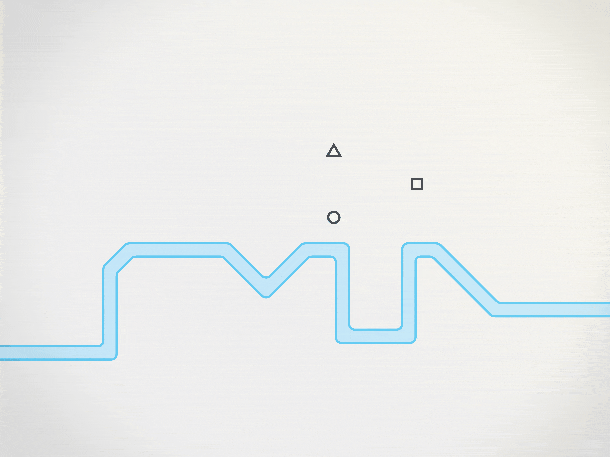I haven’t been able to put Mini Metro down all week. The game, by New Zealand-based Dinosaur Polo Club, debuted on the desktop with promises of an iOS version ‘soon.’ It took about two years, but the wait was worth it. Touch Arcade is right on point with its assessment:
the iOS version [of Mini Metro] may well be the definitive version of one of the best indie puzzle games of recent years.
That’s high praise, but deserved. Mini Metro combines simple mechanics with elegant, minimalist artwork and challenging puzzles into a whole that transcends the sum of its parts.
What makes the iOS version of Mini Metro special is how you interact with it. The premise of the game is simple. You are in charge of building a transit system for your citizens. Mini Metro starts by tasking you with building London’s Tube from a few initial train stops that you connect with rail lines by dragging your finger between them. It’s the direct manipulation of the transit system – building parts up and tearing others down – that makes Mini Metro so engrossing.
The colorful minimalist artwork also plays a big role in making Mini Metro engaging. The art is reminiscent of the classic London Tube map created by Harry Beck and made all the more enjoyable because it evolves organically across the city as you lay a sprawling network of tracks. Recognizing the artistic value of the maps you create, the developers included a feature that lets you save and share an animated GIF of your map as it evolves.
At its heart, Mini Metro is a hybrid simulator, puzzle game about managing limited resources. Over time, the population of your city grows, existing stops become crowded, and new stops are demanded. Your role is to lay the tracks, add new train lines, and deploy trains and carriages efficiently to keep everyone happy.
As each week passes in the game, you get a few more resources to deploy. Use them wisely though, because if a station on one of your train lines becomes too crowded, a timer begins to count down. If you can’t fix the congestion before time runs out, the game ends with statistics on how many passengers you managed to transport over how many days before the system collapsed.
But the strategy runs deeper than just drawing train lines and watching the transit system come to life. Train lines and passengers are represented by different shapes, which determine which stations passengers can embark and disembark from. As your system grows, the complexity of moving passengers to the correct stations gets messy quickly.
In total, there are eleven city maps to play that are unlocked as you progress. There is also a daily challenge map and two modes. The Standard mode lets you move train lines around as your city expands. In Extreme mode, after you lay down rails, you can’t move them, which makes the game much more difficult.
I’ve tried lots of great games this year, but it’s been a while since I found an iOS game that I could get lost in the way I did with some of my favorite iOS games like Alto’s Adventure and Monument Valley. Mini Metro has had that effect on me. This morning I got so lost in the game that I forgot my iPad battery was low until it finally ran out of juice mid-game. It’s just as well because otherwise I would never have finished this review. Mini Metro is a fantastic game that plays equally well on an iPhone or iPad. I highly recommend it.
Mini Metro, currently an Apple Editors’ Choice, is available on the App Store for $4.99.




